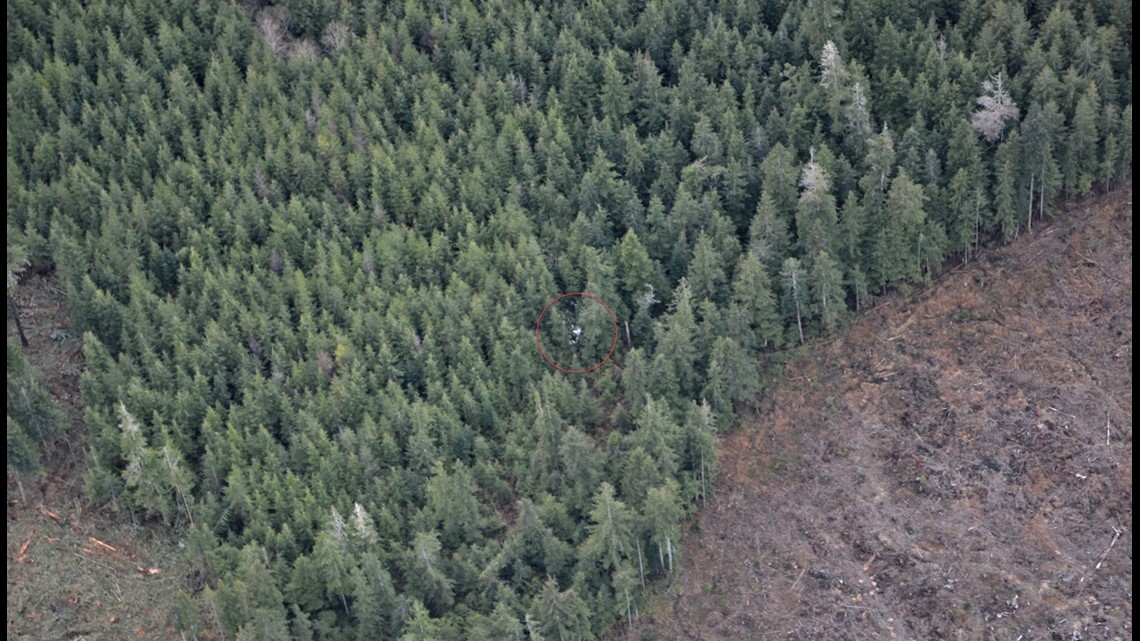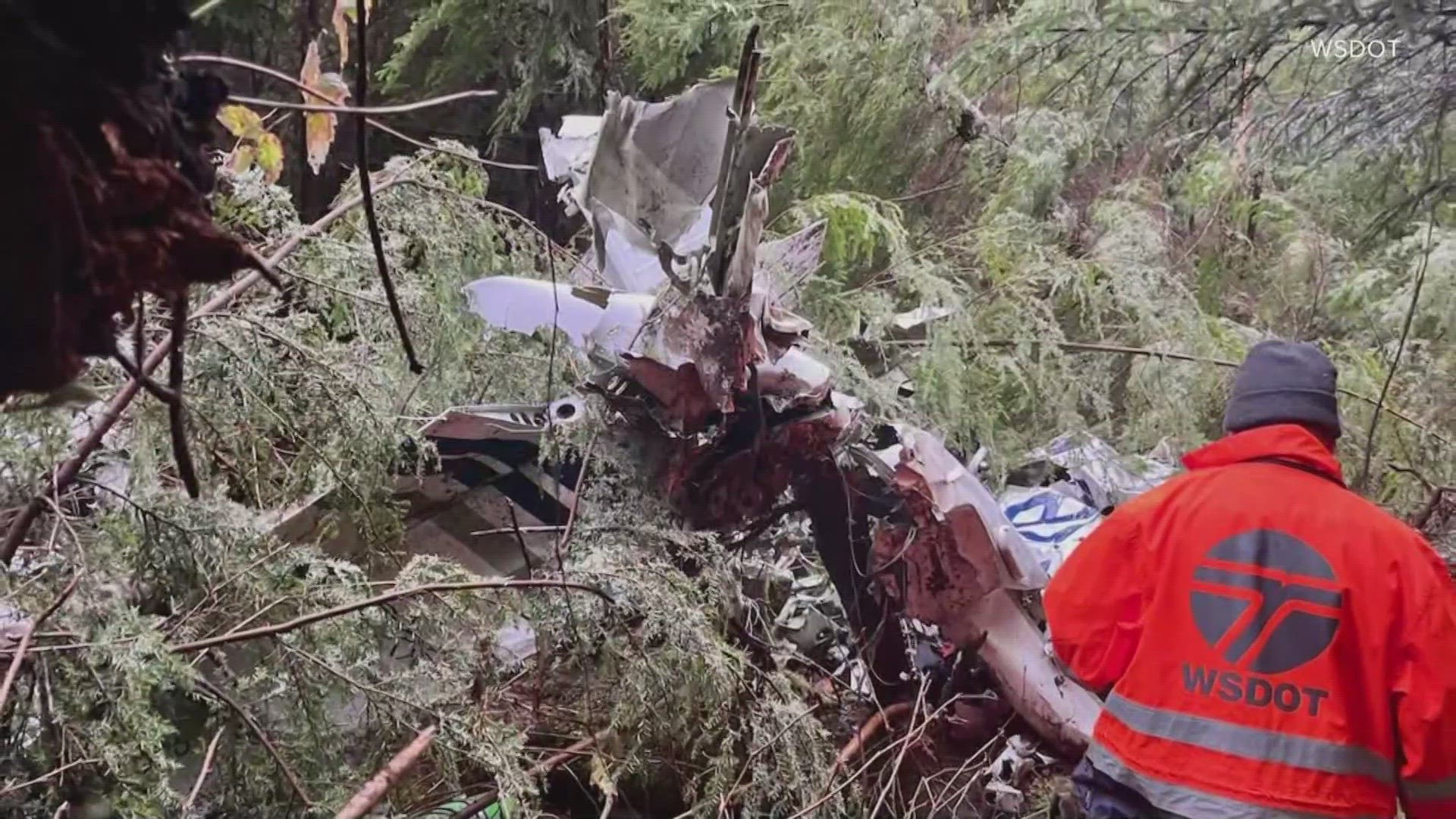QUEETS, Wash. — A Tacoma pilot who went missing after disappearing off of radar over a month ago was found dead in his plane near Queets on Monday.
Washington State Department of Transportation (WSDOT) Air Search and Rescue crews found the 2006 Cessna T182 Skylane that Rod Collen was flying when he disappeared in a wooded forest on the Olympic Peninsula.
Collen likely died on impact, according to WSDOT. Collen had been missing for 36 days.
Collen departed from the Tacoma Narrows Airport at 5:35 p.m. on Monday, March 6 and his plane abruptly fell of radar 45 minutes later, according to WSDOT.
WSDOT and other search partners searched a 36-square-mile area where Collen was believed to have gone down for two weeks but suspended the search on March 20 after finding no trace of Collen or the plane.
On Friday, April 7, crews resumed searching after a new hypothesis about what may have happened to Collen was proposed by a search and rescue partner in British Columbia. Search conditions had also greatly improved thanks to warmer weather, WSDOT said. Crews had previously been searching for the white plane in an area that was still covered in snow.
Andy Graham of Olympic Mountain Rescue says bad weather can force advanced equipment and resources to stay grounded, pushing the search to stay on foot, which slows things down considerably.
“In the case of the Olympics, or out on the Olympic Peninsula, it could be miles and miles of groundwork to get to an area,” he said. “You’re still not going to get to a pinpointed to where you’re going to go, it’s going be a larger ground area search.”
On a flight on April 7, crews noticed some items of interest from the air, but they could not positively identify what they were from that distance.


On Monday morning, WSDOT Air Search and Rescue, Quinault Emergency Management and a K9 team from the King County Search and Rescue office hiked to the location of interest and found the aircraft and Rod Collen.
The wreckage site is in an area that is densely wooded, difficult to spot and not easily accessible, WSDOT said.
This tragic outcome is why Graham says information is vital in search and rescue operations.
“How long it takes us to find someone is really dependent on the intel we get initially,” Graham said. “If we can get an exact location, we can mobilize fairly quickly, as long as it takes us to hike to them. If we don’t have good information, where the last point was, where the starting point was, it can take much, much longer, as in the case we’re talking about today.”
Recovery efforts will be directed by the Grays Harbor County Sheriff's Office. The National Transportation Safety Board will investigate the crash. The investigation could take 12 to 18 months.

